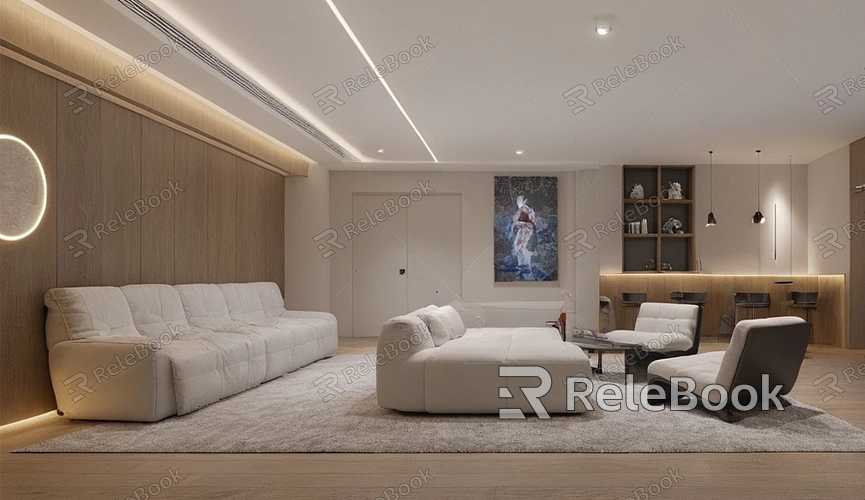How to Model Furniture in SketchUp?
SketchUp is a popular 3D modeling software known for its intuitive interface and powerful features. SketchUp can help users create precise and visually appealing 3D models in furniture design. Whether you're an interior designer or a DIY enthusiast, mastering how to model furniture in SketchUp is essential. This article will guide you through the basic steps to efficiently complete furniture modeling tasks.

Set Up Your Workspace
Before starting the modeling process, ensure your workspace is properly set up. When you open SketchUp, choose an appropriate template, such as "Metric" or "Imperial," based on your needs. Next, configure the units and precision to ensure accurate modeling. You can find these options under the "Model Info" section in the "Window" menu. Setting up these basic parameters will lay a solid foundation for your modeling work.
Draw Basic Shapes
The first step in modeling is drawing the basic shapes of the furniture. Use the "Rectangle Tool" or "Circle Tool" to draw the base or main frame of the furniture. With the "Push/Pull Tool," you can extrude 2D shapes into 3D objects. For more precise models, you can input specific dimensions to ensure the correct scale. For more complex furniture, such as a sofa with curves, use the "Freehand Tool" to draw more intricate outlines.
Add Details
Once the basic shape is complete, start adding details. Use the "Line Tool" to draw dividing lines or decorative features on the model. You can also use the "Arc Tool" to smooth out edges, giving the furniture a more realistic look. For smaller details like handles or decorative panels, you can copy and paste them or use the "Component" feature to speed up the process.

Apply Materials and Textures
After modeling, applying materials and textures is crucial to make the furniture appear more realistic. In the "Materials" panel, you can choose different textures like wood, fabric, or metal, and drag them onto the model. You can also import custom textures by adding images to simulate real furniture materials. Adjusting material properties, such as gloss and reflectivity, can further enhance the realism of your model.
Create Components and Groups
To improve efficiency and manageability, create components or groups for different parts of the furniture. Components are independent models that can be reused throughout the project, and editing one component will affect all identical ones. Groups combine multiple parts for easy movement and adjustments. Using components and groups helps you stay organized and simplifies the modeling process.
Render and Review
Once the modeling and material application is finished, rendering and reviewing the model are important final steps. You can use SketchUp's built-in rendering tools or export the model to other rendering software to generate high-quality images. Carefully review the model to ensure all parts meet design specifications. Rendering not only helps you verify the design but also allows you to present it to clients more effectively.
Modeling furniture in SketchUp involves several steps, from setting up your workspace, drawing basic shapes, and adding details to applying materials and textures. By following these steps, you can create precise and visually appealing furniture models. Once you've mastered these techniques, you’ll be able to work more efficiently and complete design tasks with ease. To further enhance your designs, you can download additional 3D models and textures from Relebook to enrich your design library.
FAQ
How do I accurately model furniture dimensions in SketchUp?
In SketchUp, you can ensure accurate dimensions by using the "Push/Pull Tool" and inputting specific measurements. You can also use the "Dimension Tool" to add dimension annotations, helping you verify and adjust the model's size.
How can I modify an existing furniture model in SketchUp?
Use the "Select Tool" to choose the part of the model you want to modify, then use the "Move," "Scale," or "Rotate" tools to make changes. If the model is grouped or made into a component, double-click to enter the editing mode and make your adjustments.
How do I add custom textures to a furniture model in SketchUp?
In the "Materials" panel, choose "Create Material" and import an image as a texture. Adjust the scale and position of the texture to fit the model. You can also explore texture libraries to find suitable textures for your project.
How can I improve rendering quality in SketchUp?
You can use rendering plugins like V-Ray or Enscape to produce high-quality images. Adjust lighting, material properties, and camera settings to optimize the render and ensure that the model's details and texture look realistic.

